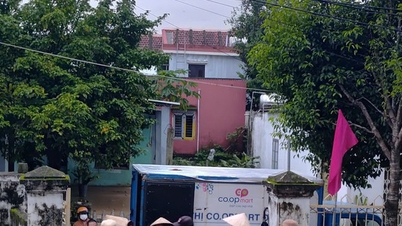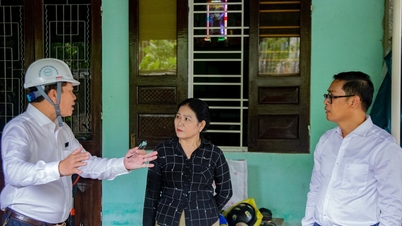In response to the proposal by Ho Chi Minh City to study and allow the conversion of gasoline motorbikes into electric ones (retrofit), many members of social networking groups said that it would be difficult to implement due to technical risks, safety and legal barriers. Although the goal is to utilize old vehicles and reduce emissions, this poses more risks than benefits.
Accordingly, the biggest problem of conversion lies in the fact that the gasoline and electric vehicle frames cannot be used together. The original gasoline frame is not designed to mount batteries and electric motors. Removing the gasoline engine and installing an electric motor instead will change the entire structure, weight and weight distribution that have been carefully calculated by the manufacturer from the beginning.

When electrical components are installed, the vehicle can become unbalanced, breaking the original specifications, directly affecting the suspension system, tires, frame and load-bearing structures. Electric motorcycle batteries are often quite heavy and require optimal placement, which is not possible with gasoline frames.
In addition, the suspension and braking systems of gasoline vehicles also need to be recalculated, because the acceleration of electric motorbikes is often significantly greater. A modified vehicle is very difficult to ensure water resistance and effective heat dissipation, causing a serious decrease in durability and safety. In fact, from some recent electric vehicle fires, it shows that after the vehicle burned to the frame, the modified battery box was exposed.
Besides technical risks, conversion also faces legal barriers. Currently, the registration process and legal guidelines for converted vehicles are still unclear. Without strict control, it is easy to be exploited for vehicle power modification.
Many people believe that this conversion is not very practical, especially in terms of aesthetics and overall safety. Currently, many car manufacturers have developed new electric motorbikes with costs equivalent to or even cheaper than gasoline vehicles. Conversion, if calculated costs, is not necessarily economically beneficial. Therefore, when the legal framework is not ready, this proposal is considered not really close to reality.
In many Asian countries such as India, the conversion of gasoline motorbikes to electric has appeared. Companies develop separate "kits" (including batteries, motors, electrical systems) for each model of motorbike. However, the biggest challenge is still legal standards and uniform quality control to ensure safety. In fact, it is very difficult to distinguish a converted motorbike that meets safety standards when running on the road with the naked eye.
In India, although the Automotive Research Agency (ARAI) has issued technical standards for retrofit from 2022, it still faces many barriers. Businesses wanting to convert must be certified for electrical safety, structure, battery and brakes, so large-scale implementation is still difficult.
The reason comes from the safety of lithium batteries, which are often heavy, take up a lot of space, easily affect the balance and the original heat dissipation capacity of the vehicle does not respond well, increasing the risk of fire and explosion. Moreover, the conversion cost is not necessarily cheap, if you include the battery (accounting for half the value of the kit, with a lifespan of only 3-5 years), installation and registration costs, the cost can be 60% to 100% of a new electric vehicle with a genuine warranty and synchronous design.
Source: https://khoahocdoisong.vn/hoan-cai-xe-may-chay-xang-sang-dien-tai-tphcm-kho-kha-thi-post2149066549.html






![[Photo] Closing of the 14th Conference of the 13th Party Central Committee](https://vphoto.vietnam.vn/thumb/1200x675/vietnam/resource/IMAGE/2025/11/06/1762404919012_a1-bnd-5975-5183-jpg.webp)



































































































Comment (0)